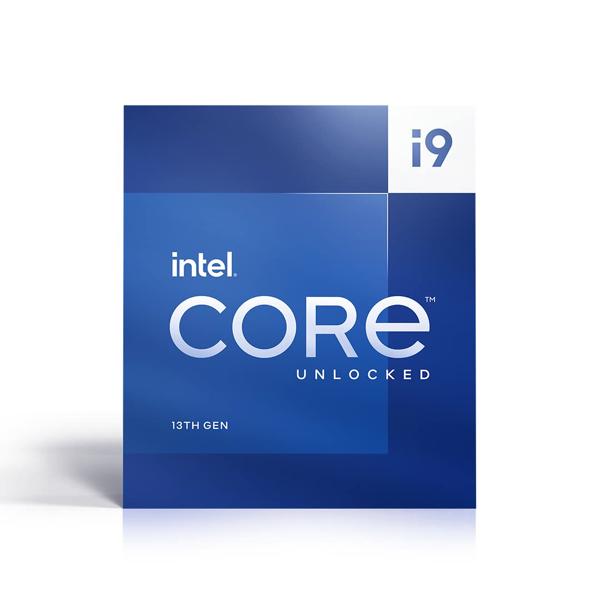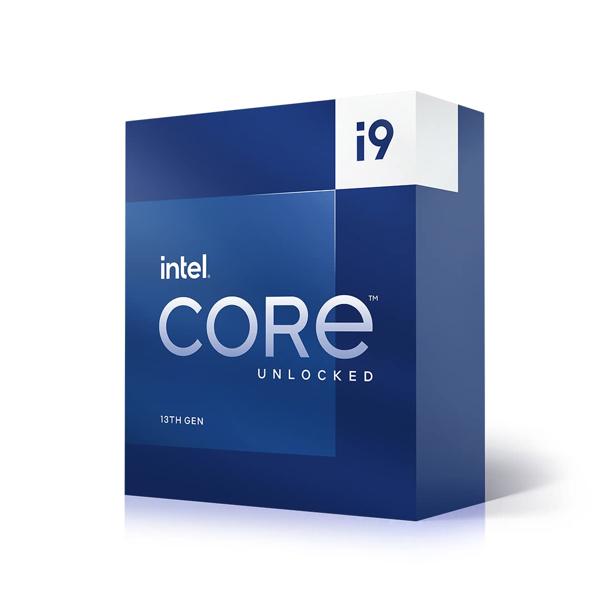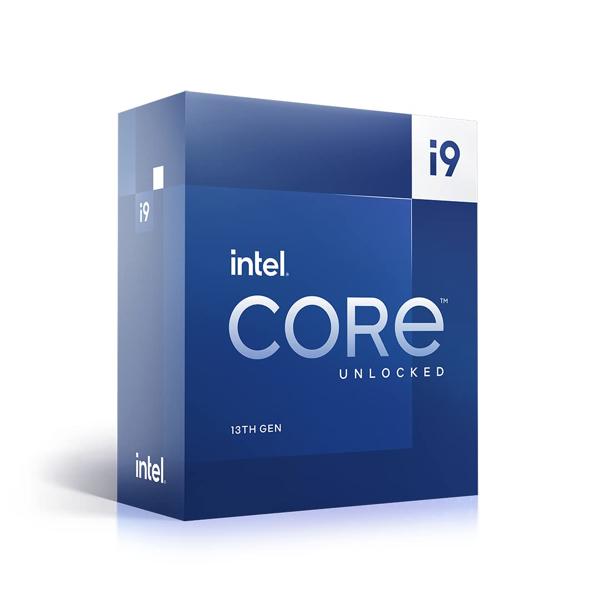





INTEL 13TH GEN I-9 13900
Intel's 13th generation processors, known as Raptor Lake, build on Alder Lake's hybrid architecture, enhancing performance with more efficient cores. They support DDR5 memory and advanced features for superior gaming and multitasking.
Features
The Intel Core i9-13900 is a high-end processor from Intel’s 13th-generation Raptor Lake series. Positioned below the "K" series models, this CPU delivers outstanding performance while offering a more balanced price-to-performance ratio. With a combination of powerful performance cores and efficient cores, it is ideal for demanding applications like gaming, content creation, and professional workflows.
Core Specifications:
Core Configuration:
- Total Cores: 24 cores consisting of 8 Performance-cores (P-cores) and 16 Efficient-cores (E-cores). The P-cores are designed for tasks requiring higher clock speeds and single-threaded performance, while the E-cores are optimized for background tasks and power efficiency.
- Total Threads: 32 threads, as the Performance-cores support Intel Hyper-Threading Technology, effectively doubling the number of threads that can be processed simultaneously. This makes it ideal for multi-threaded applications and multitasking.
Clock Speeds:
- Base Clock: The P-cores have a base clock of 2.0 GHz, while the E-cores operate at 1.5 GHz, providing stable base speeds for light and background tasks.
- Maximum Turbo Boost Clock: The P-cores can reach a maximum turbo speed of up to 5.6 GHz, delivering excellent single-core performance. The E-cores can boost up to 4.3 GHz when needed, ensuring that multi-core performance is also top-notch.
- All-Core Boost: When running multi-threaded workloads, the P-cores can achieve up to 5.3 GHz on all cores simultaneously, ensuring smooth performance across all tasks.
Cache:
- The Intel Core i9-13900 is equipped with a 36MB Intel Smart Cache, which is designed to reduce data retrieval times, helping to improve performance in multi-threaded workloads.
- The large cache size allows the processor to store frequently accessed data, minimizing latency and boosting system responsiveness.
Architectural Features:
Raptor Lake Architecture:
- The i9-13900 uses Intel’s Raptor Lake architecture, built on a 10nm process, which combines high-performance cores (P-cores) with efficient cores (E-cores). This hybrid design helps provide a balance between performance and power consumption, making it highly efficient for both single-threaded and multi-threaded workloads.
- This architecture is designed to handle a wide range of workloads from gaming to content creation and productivity, all while maintaining a focus on energy efficiency.
Intel UHD Graphics 770:
- Unlike the "KF" versions of Intel CPUs, the i9-13900 includes Intel UHD Graphics 770, which offers integrated GPU capabilities. While it is not suited for high-end gaming or graphics-intensive workloads, it can handle casual gaming, video playback, and other basic graphics tasks without requiring a dedicated graphics card.
Performance and Use Cases:
Gaming:
- The i9-13900 offers an outstanding gaming experience, capable of running the latest AAA games at 1440p and 4K with high frame rates. The high turbo clock speeds of 5.6 GHz for P-cores ensure that the processor can handle even the most demanding games.
- Paired with a dedicated GPU, the i9-13900 delivers smooth gameplay in open-world games, esports titles, and high-performance gaming environments. Its excellent single-core performance and multi-core efficiency ensure minimal bottlenecks in both modern and legacy titles.
Content Creation:
- With 24 cores and 32 threads, the i9-13900 is a powerhouse for content creation, enabling rapid rendering, video editing, and 3D modeling. Software like Adobe Premiere Pro, DaVinci Resolve, and Blender will benefit significantly from the CPU’s multi-core design, speeding up render times and complex project workflows.
- The 5.6 GHz turbo boost ensures that the i9-13900 performs exceptionally well for single-threaded tasks in creative applications, including photo editing and graphic design.
Professional Workloads:
- The i9-13900’s multi-threaded capabilities make it a fantastic choice for professional workloads, including software development, data analysis, scientific computing, and engineering applications. The processor’s high core count and clock speeds offer excellent performance in compiling code, running virtual machines, and handling large data sets.
- The combination of P-cores and E-cores ensures that even background tasks do not interfere with demanding applications, maintaining stability and responsiveness.
Advanced Features:
PCIe 5.0 Support:
- The i9-13900 supports PCIe 5.0, which provides double the data bandwidth of PCIe 4.0. This is particularly beneficial for next-gen GPUs and high-speed storage devices, allowing for faster data transfer and improved overall system performance.
DDR5 and DDR4 Memory Support:
- The i9-13900 is compatible with both DDR4 and DDR5 memory, allowing users to select between cost-effective DDR4 memory or the more advanced, higher-performance DDR5, which provides faster memory speeds and greater bandwidth. This ensures that users can tailor their system to fit their budget and performance needs.
Intel Thermal Velocity Boost:
- Thermal Velocity Boost automatically adjusts the processor’s clock speed to 5.6 GHz, based on available thermal headroom, ensuring maximum performance for short, bursty workloads like gaming or heavy single-threaded tasks.
Intel Adaptive Boost Technology:
- Adaptive Boost Technology optimizes turbo clock speeds across all cores depending on thermal and power conditions. It helps ensure that the i9-13900 performs efficiently even under sustained workloads, without thermal throttling, ensuring smooth and uninterrupted performance.
Overclocking Support:
- The i9-13900 is unlocked, meaning it can be overclocked to achieve even higher performance. Overclocking enthusiasts can push the processor to its limits, achieving greater performance in demanding applications, benchmarks, and gaming.
Power and Cooling Requirements:
- Thermal Design Power (TDP):
- The i9-13900 has a base TDP of 125W but can exceed 253W under full load, especially when boosting clock speeds or overclocking. This necessitates an efficient cooling solution to manage the heat output effectively.
- Cooling Solutions:
- Given the high power consumption under load, users should consider premium cooling options, such as high-end air coolers or all-in-one (AIO) liquid cooling solutions, to maintain low temperatures during intensive workloads or overclocking sessions.
- For typical everyday use, a solid air cooler or mid-range liquid cooler should suffice, but for sustained high performance, especially under load, stronger cooling setups are necessary.
Benefits for Users:
- Gamers: The i9-13900 offers unrivaled gaming performance, providing fast frame rates and smooth gameplay at 1440p and 4K resolutions. Its high turbo boost speeds ensure responsiveness in gaming, even in complex scenarios.
- Content Creators and Professionals: With 24 cores and 32 threads, the i9-13900 is a workhorse for content creators and professionals. Its ability to handle demanding creative and professional applications ensures faster rendering, editing, and simulations, improving productivity.
- Enthusiasts and Overclockers: Overclocking enthusiasts will appreciate the i9-13900’s unlocked design and the ability to push it to its limits for even greater performance, whether for gaming, benchmarking, or professional applications.
Specifications
| TOTAL NUMBER OF CORE | 24 |
|---|---|
| TOTAL NUMBER OF PERFORMANCE CORES | 8 |
| TOTAL NUMBER OF EFFICIENT CORES | 16 |
| TOTAL NUMBER OF THREADS | 32 |
| MAX RAM MEMORY SUPPORT | 192 GB |
| MOTHERBOARD SUPPORT | 600 / 700 SERIES |
| MEMORY SUPPORT | DDR-4 UPTO 3200 MT/S, DDR-5 UPTO 5600 MT/S |
| MAX MEMORY BANDWIDTH | 89.6 GB/S |
| EFFICIENT CORE BASE FREQUENCY | 1.50 GHZ |
| EFFICIENT CORE MAX TURBO FREQUENCY | 4.20 GHZ |
| PERFORMANCE CORE BASE FREQUENCY | 2.00 GHZ |
| PERFORMANCE CORE MAX TURBO FREQUENCY | 5.60 GHZ |
| SOCKET TYPE | LGA 1700 |
| LITHOGRAPHY | 7NM |
| TOTAL CACHE | 36 MB |
| TOTAL L2 CACHE | 32 MB |
| THERMAL JUNCTION | 100 |
| PCIe REVISION | 4.0 AND 5.0 |
| MAX NUMBER OF PCIe LANES | 20 |
| PROCESSOR TDP | 219 W |
| INBUILT GRAPHIC PROCESSING UNIT | YES |
| GPU NAME | INTEL UHD GRAPHIC 770 |
| GPU BASE FREQUENCY | 300 MHZ |
| GPU MAX DYNAMIC FREQUENCY | 1.65 GHZ |
| GPU VIDEO MAX MEMORY | HALF OF SYSTEM MEMORY |